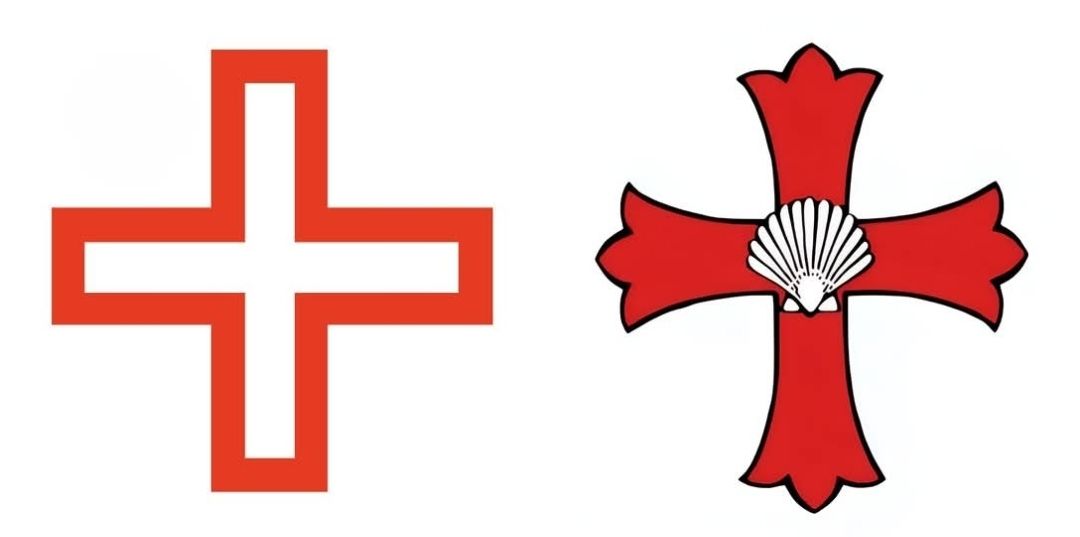The Red Flowered Cross with the White Shell at Its Centre
The coat of arms of the Knights of Saint Thomas of Acre stands as one of the most distinctive emblems in medieval and modern heraldry. Its design, rooted in centuries of faith, sacrifice, and devotion, reflects not only the Order’s connection to Saint Thomas Becket, but also the enduring legacy of English knighthood and Christian service. To understand its meaning is to uncover a remarkable journey — from the Crusader city of Acre to the heart of London, and from medieval battlefields to the brotherhood that still preserves its spirit today.
Origins of the Knights of Saint Thomas and Their First Emblem
The Order of Saint Thomas of Acre was founded in July 1191, during the Third Crusade, at the port city of Acre in the Holy Land. Established in honour of Saint Thomas Becket, the martyred Archbishop of Canterbury, the Order was both a military and charitable brotherhood, dedicated to protecting pilgrims and upholding Christian values.In its earliest days, the Knights of Saint Thomas bore a simple red cross as their emblem — a symbol of sacrifice and divine mission. This cross closely resembled that of the Knights Templar, whose presence in the Holy Land was already prominent. As the two orders often served alongside each other, confusion between their insignia became common.To resolve the matter, in 1236, the Templars formally petitioned Pope Gregory IX, requesting that the Knights of Saint Thomas alter their design to ensure each order maintained a distinct coat of arms. Acting upon this petition, the Pope instructed the Hospitallers of Saint Thomas to revise their emblem. The result was a red cross with a white centre, clearly differentiating it from the pure red cross of the Templars.This modification marked a turning point in the heraldic identity of the Order. The new design was simple yet meaningful — the red symbolising martyrdom and courage, the white representing purity, truth, and divine grace. Together, they formed a powerful emblem of Christian chivalry and unity under the patronage of Saint Thomas Becket.
Transformation After the Fall of Acre
When Acre fell to Muslim forces in 1291, it marked the end of the Crusader Kingdom of Jerusalem. The surviving Knights of Saint Thomas returned to England, where they re-established their headquarters in London, near the ancient church of Saint Thomas of Acre (today’s Mercers’ Hall site).In the years that followed, the Order’s emblem evolved once again to reflect both its English heritage and its spiritual devotion. The knights adopted a red flowered cross bearing a white scallop shell at its centre. This became the definitive coat of arms of the Knights of Saint Thomas of Acre, and remains its most recognised symbol to this day.
Meaning of the Red Cross and White Scallop Shell
Every element of this historic coat of arms holds deep significance. The red flowered cross symbolises the martyrdom of Saint Thomas Becket, whose blood was shed in Canterbury Cathedral in 1170 for defending the spiritual freedom of the Church. It is a reminder of the Order’s commitment to the faith and to the noble ideals of sacrifice and service.The white scallop shell, placed at the heart of the cross, represents the pilgrimage to Canterbury, where countless faithful journeyed to venerate the shrine of Saint Thomas. In medieval times, the scallop shell was the universal badge of pilgrims — a sign of spiritual journey, humility, and devotion. For the Knights of Saint Thomas, it symbolised both physical and moral pilgrimage: a lifelong commitment to righteousness, purity, and brotherhood under God.Together, the red and white form a perfect harmony of courage and purity — the essence of English chivalric tradition.
A Living Symbol of Identity and Heritage
Today, the coat of arms of the Knights of Saint Thomas of Acre remains a treasured emblem of continuity and honour. It is still used by the modern brotherhood, preserved under legal protection within the United Kingdom. The red cross with the white scallop shell is not merely a design — it is a sacred heritage, representing centuries of faith, knighthood, and English Christian identity.This insignia reminds each member of the Order of their solemn duty: to uphold truth, defend the faith, and serve with humility. It is more than a historical symbol; it is a living link to the medieval crusaders who embodied the virtues of courage, loyalty, and spiritual devotion.For the Knights of Saint Thomas, this coat of arms continues to reflect their sacred vow: to preserve the legacy of Saint Thomas Becket and to carry forward the chivalric spirit of the English Crusaders — Ad Majorem Dei Gloriam.
